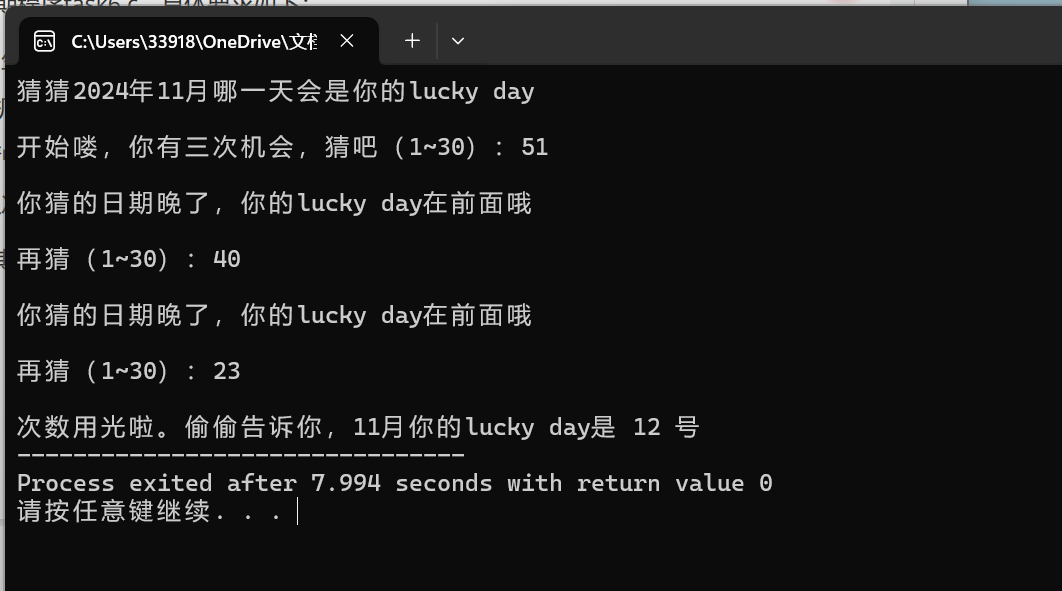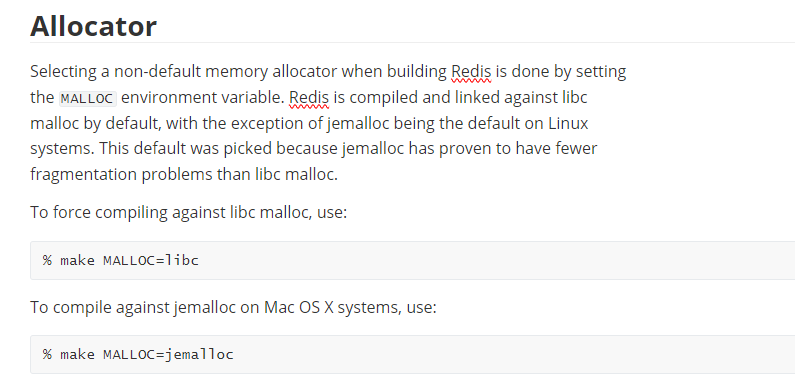一、简介
- 只是一个创建per-cpu线程执行用户提供的回调的机制。
- 内核中已存在的注册
static struct smp_hotplug_thread idle_inject_threads = { //drivers/powercap/idle_inject.c.store = &idle_inject_thread.tsk,.setup = idle_inject_setup,.thread_fn = idle_inject_fn,.thread_comm = "idle_inject/%u",.thread_should_run = idle_inject_should_run,
};
early_initcallsmpboot_register_percpu_thread(&idle_inject_threads);static struct smp_hotplug_thread cpu_stop_threads = { //kernel/stop_machine.c.store = &cpu_stopper.thread,.thread_should_run = cpu_stop_should_run,.thread_fn = cpu_stopper_thread,.thread_comm = "migration/%u",.create = cpu_stop_create,.park = cpu_stop_park,.selfparking = true,
};
early_initcallsmpboot_register_percpu_thread(&cpu_stop_threads)static struct smp_hotplug_thread rcu_cpu_thread_spec = { //kernel/rcu/tree.c.store = &rcu_data.rcu_cpu_kthread_task,.thread_should_run = rcu_cpu_kthread_should_run,.thread_fn = rcu_cpu_kthread,.thread_comm = "rcuc/%u", //per-cpu的.setup = rcu_cpu_kthread_setup,.park = rcu_cpu_kthread_park,
};
early_initcallsmpboot_register_percpu_thread(&rcu_cpu_thread_spec)static struct smp_hotplug_thread softirq_threads = { //kernel/softirq.c.store = &ksoftirqd,.thread_should_run = ksoftirqd_should_run,.thread_fn = run_ksoftirqd,.thread_comm = "ksoftirqd/%u",
};
early_initcallsmpboot_register_percpu_thread(&softirq_threads)static struct smp_hotplug_thread cpuhp_threads = { //kernel/cpu.c.store = &cpuhp_state.thread,.create = &cpuhp_create,.thread_should_run = cpuhp_should_run,.thread_fn = cpuhp_thread_fun,.thread_comm = "cpuhp/%u",.selfparking = true,
};
kernel_init_freeable //在 do_basic_setup() 时调用,比 early_initcall 调用的还早smp_initsmpboot_register_percpu_thread(&cpuhp_threads)
都是通过 smpboot_register_percpu_thread(struct smp_hotplug_thread *plug_thread) 函数在内核启动早期调用的。注册线程的函数体都是smpboot_thread_fn()。
二、相关数据结构
- struct smp_hotplug_thread
struct smp_hotplug_thread { //include/linux/smpboot.hsstruct task_struct * __percpu *store;struct list_head list;int (*thread_should_run)(unsigned int cpu);void (*thread_fn)(unsigned int cpu);void (*create)(unsigned int cpu);void (*setup)(unsigned int cpu);void (*cleanup)(unsigned int cpu, bool online);void (*park)(unsigned int cpu);void (*unpark)(unsigned int cpu);bool selfparking;const char *thread_comm;
};
CPU hotplug 相关的描述符。
- store: per-cpu变量,指向每个 cpu 上的 task_struct 结构。smp hotplug thread 在注册时会为每个CPU注册一个内核线程。
- list: 在初始化时通过它挂在全局 hotplug_threads 链表上,方便 core 进行管理。
- thread_should_run: 检查线程是否应该运行的回调函数,在禁用抢占的情况下调用。
- thread_fn: 关联的功能函数,这个是主要的回调,是开着抢占调用的。
- create: 可选的设置回调函数,在创建线程时调用(不是从线程上下文中调用,TODO: 是在内核启动时调用?)
- setup: 可选的设置回调函数,当线程第一次运行时调用,可用于设置线程属性。
- cleanup: 可选的清理回调函数,当线程应该停止时调用(模块退出)
- park: 可选的 park 回调函数,当线程被 park 时调用(cpu offline)
- unpark: 可选的 unpark 回调函数,当线程被 unpark 时调用(cpu online)
- selfparking: 若初始化为true,则创建完线程后线程状态是unpark的,为false则是parked的。
- thread_comm: 创建的per-cpu线程的名称中基础的部分。
- struct smpboot_thread_data
struct smpboot_thread_data {unsigned int cpu;unsigned int status;struct smp_hotplug_thread *ht;
};
是一个辅助结构。
cpu: 判断是哪个CPU的,也就是在哪个CPU上执行。
status: per-cpu的hotplug线程的状态。
ht: 指向用户注册的hotplug结构
三、注册流程
一般内核模块会先初始化一个 smp_hotplug_thread 结构,然后通常在 early_initcall() 或内核启动更早期调用 smpboot_register_percpu_thread() 进行注册。下面使用 stop_machine.c 中的注册进行举例:
static int __init cpu_stop_init(void)
{smpboot_register_percpu_thread(&cpu_stop_threads);
}
early_initcall(cpu_stop_init);
- 注册函数执行流程:
int smpboot_register_percpu_thread(struct smp_hotplug_thread *plug_thread) //smpboot.c
{...for_each_online_cpu(cpu) {__smpboot_create_thread(plug_thread, cpu);smpboot_unpark_thread(plug_thread, cpu);}list_add(&plug_thread->list, &hotplug_threads);
}
1.1. __smpboot_create_thread 函数:
static int __smpboot_create_thread(struct smp_hotplug_thread *ht, unsigned int cpu) //smpboot.c
{struct task_struct *tsk = *per_cpu_ptr(ht->store, cpu);struct smpboot_thread_data *td;td = kzalloc_node(sizeof(*td), GFP_KERNEL, cpu_to_node(cpu)); //arg2=0td->cpu = cpu;td->ht = ht;/* 创建的是这个内核线程,执行的函数体是 smpboot_thread_fn() 参数传的是td,td->ht 指向用户注册的结构 */tsk = kthread_create_on_cpu(smpboot_thread_fn, td, cpu, ht->thread_comm);/* 在 kthread->flags |= KTHREAD_IS_PER_CPU 标志 */kthread_set_per_cpu(tsk, cpu);/** 设置tsk的 kthread->flags |= KTHREAD_SHOULD_PARK, 然后tsk会进入到TASK_PARKED状态,* 若tsk!=current则先唤醒它然后让其进入到TASK_PARKED状态。*/kthread_park(tsk);/* 每个CPU上创建的任务由per-cpu的 store 指向 */*per_cpu_ptr(ht->store, cpu) = tsk;/* 若提供了 create 回调则调用,此时内核启动阶段,非进程上下文 */if (ht->create) {wait_task_inactive(tsk, TASK_PARKED);ht->create(cpu);}return 0;
}struct task_struct *kthread_create_on_cpu(int (*threadfn)(void *data),void *data, unsigned int cpu, const char *namefmt)
{/* 在指定的cpu上注册一个CFS 120优先级的内核线程,线程函数体为 smpboot_thread_fn() */struct task_struct p = kthread_create_on_node(threadfn, data, cpu_to_node(cpu), namefmt, cpu);/* * 将创建的线程绑定到这个cpu上,这里会同时设置 p->flags |= PF_NO_SETAFFINITY* 标志位,不允许用户空间设置亲和性。*/kthread_bind(p, cpu);/* 翻译:CPU 热插拔需要在 unparking 线程时再次绑定 */to_kthread(p)->cpu = cpu;return p;
}
1.2 smpboot_unpark_thread 函数:
static void smpboot_unpark_thread(struct smp_hotplug_thread *ht, unsigned int cpu)
{struct task_struct *tsk = *per_cpu_ptr(ht->store, cpu);/* 若是使用者没有设置 selfparking= true 则会调用 */if (!ht->selfparking)kthread_unpark(tsk);
}void kthread_unpark(struct task_struct *k)
{struct kthread *kthread = to_kthread(k);/* 翻译:新创建的 kthread 在 CPU 离线时被停放。绑定丢失了,需要重新设置。*/if (test_bit(KTHREAD_IS_PER_CPU, &kthread->flags))__kthread_bind(k, kthread->cpu, TASK_PARKED);clear_bit(KTHREAD_SHOULD_PARK, &kthread->flags);/* 唤醒 parked 状态的任务 */wake_up_state(k, TASK_PARKED);
}
- 总结
可以看到,所有注册 smp_hotplug_thread 结构的模块,响应函数都是 smpboot_thread_fn(),默认是CFS 120优先级。
若 smp_hotplug_thread::selfparking = true,则创建完线程后会自动对线程进行unpark操作,创建出来的线程是unparked状态。
为flase则创建出来的线程是parked的状态,使用者还需要自己进行unpark。
若提供了 smp_hotplug_thread::create 回调,则在创建过程中就会调用,此时还是内核启动的 early_init() 或更早的阶段。
线程创建时已经和单个CPU绑定了,且设置了 p->flags |= PF_NO_SETAFFINITY,不允许用户空间设置亲和性了。
四、实现逻辑
- smpboot_thread_fn() 实现
既然创建的per-cpu的内核线程执行的是 smpboot_thread_fn(),这个函数是per-cpu的hotplug线程的死循环函数,在它里面会
检查线程是否需要stop、park、unpark、setup、cleanup 并调用用户注册的对应的回到函数。其目前只能返回0。下面看其实现。
static int smpboot_thread_fn(void *data) //smpboot.c
{struct smpboot_thread_data *td = data;struct smp_hotplug_thread *ht = td->ht;while (1) {set_current_state(TASK_INTERRUPTIBLE);preempt_disable();/* * 判断 kthread->flag & KTHREAD_SHOULD_STOP, 判断此 kthread 现* 在是否应该返回。* 当有人对此kthread调用了 kthread_stop() 时,它会被唤醒并返回* true。然后这里应该返回,返回值将被传递给 kthread_stop()。*/if (kthread_should_stop()) {__set_current_state(TASK_RUNNING);preempt_enable();/* cleanup must mirror setup */if (ht->cleanup && td->status != HP_THREAD_NONE)ht->cleanup(td->cpu, cpu_online(td->cpu));kfree(td);return 0;}/* 判断 to_kthread->flags & KTHREAD_SHOULD_PARK, 判断此 kthread* 现在是否应该被park。* 也是先唤醒,然后执行park()回调。*/if (kthread_should_park()) {__set_current_state(TASK_RUNNING);preempt_enable();if (ht->park && td->status == HP_THREAD_ACTIVE) {BUG_ON(td->cpu != smp_processor_id());ht->park(td->cpu);td->status = HP_THREAD_PARKED;}/** 设置 current->state=TASK_PARKED,complete(&self->parked)* 然后将自己切走。*/kthread_parkme();/* We might have been woken for stop */continue;}/* ---- 下面就是不需要stop和不需要park的情况了 ---- */BUG_ON(td->cpu != smp_processor_id());/* Check for state change setup */switch (td->status) {case HP_THREAD_NONE:__set_current_state(TASK_RUNNING);preempt_enable();if (ht->setup)ht->setup(td->cpu);td->status = HP_THREAD_ACTIVE;continue;case HP_THREAD_PARKED:__set_current_state(TASK_RUNNING);preempt_enable();if (ht->unpark)ht->unpark(td->cpu);td->status = HP_THREAD_ACTIVE;continue;}/** 判断注册的回调是否需要运行,为假表示不需要运行,切走。* 若需要运行,则调用 ht->thread_fn() 回调。*/if (!ht->thread_should_run(td->cpu)) {preempt_enable_no_resched();schedule();} else {__set_current_state(TASK_RUNNING);preempt_enable();ht->thread_fn(td->cpu); //例如:cpuhp_thread_fun}}
}
这个函数是个单纯的死循环执行逻辑,没有持任何锁,只是部分函数回调时是关着抢占的。
- 其调用路径
上面注册per-cpu的内核线程是作为线程执行实体是其唯一调用路径,没有其它调用路径。
五、使用方法
可以用该函数在每个cpu上创建对应的线程
#include <linux/smpboot.h>
#include <linux/sched.h>
#include <linux/percpu.h>// 定义每CPU线程的数据结构
struct my_thread_info {struct task_struct *task;unsigned long data;
};static DEFINE_PER_CPU(struct my_thread_info, my_thread_info);// 线程函数
static void my_thread_func(unsigned int cpu)
{struct my_thread_info *ti = this_cpu_ptr(&my_thread_info);while (!kthread_should_stop()) {// 执行特定的任务pr_info("Thread running on CPU %d\n", cpu);set_current_state(TASK_INTERRUPTIBLE);schedule_timeout(HZ); // 休眠1秒}
}// 线程启动函数
static int my_thread_start(unsigned int cpu)
{struct my_thread_info *ti = &per_cpu(my_thread_info, cpu);ti->data = cpu * 100; // 示例数据return 0;
}// 线程停止函数
static void my_thread_stop(unsigned int cpu)
{struct my_thread_info *ti = &per_cpu(my_thread_info, cpu);// 清理资源
}// 定义线程控制结构
static struct smp_hotplug_thread my_threads = {.store = &my_thread_info.task,.thread_fn = my_thread_func,.setup = my_thread_start,.cleanup = my_thread_stop,.park = NULL,.unpark = NULL,
};// 初始化函数
static int __init my_init(void)
{int err;err = smpboot_register_percpu_thread(&my_threads);if (err)pr_err("Failed to register per-cpu threads\n");return err;
}// 退出函数
static void __exit my_exit(void)
{smpboot_unregister_percpu_thread(&my_threads);
}module_init(my_init);
module_exit(my_exit);MODULE_LICENSE("GPL");
MODULE_AUTHOR("Your Name");
MODULE_DESCRIPTION("Example of using smpboot_register_percpu_thread");
六、总结
注册 smp_hotplug_thread 结构,内核只是提供了为每个CPU都创建一个线程执行其回调的机制,线程函数体是 smpboot_thread_fn(),此函数没有任何其它调用路径,因此使用者只能通过唤醒+实现回调来实现自己的功能,执行完回调后进程自动休眠。
七、补充
- cpuhotplug回调除了静态指定数组成员外,还可以动态注册,类似于sysrq的实现
cpufreq_register_driverret = cpuhp_setup_state_nocalls_cpuslocked(CPUHP_AP_ONLINE_DYN,"cpufreq:online", cpuhp_cpufreq_online, cpuhp_cpufreq_offline);
此函数会注册到 cpuhp_hp_states[CPUHP_AP_ONLINE_DYN] 对应的位置上。






